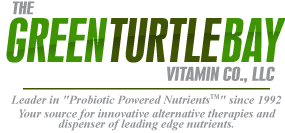Premenstrual Syndrome (PMS)
The following is excerpted with permission from a book written by Dr. Richard Podell, M.D. This information has been helpful to thousands of people in the past, but is not meant to replace your physician. Be sure to check with your physician before undergoing any change in diet. Dr. Podell maintains a practice in New Providence, NJ (see Podell Medical Center) ©1993 The Podell Medical Center. All rights reserved. May not be reproduced in any form without prior written permission.
| PREMENSTRUAL SYNDROME (PMS) |
Many, perhaps most women, develop symptoms during the week or two before their period, symptoms which disappear during the first few days of menstruation. The minority of women for whom symptoms are severe, even incapacitating are said to have Premenstrual Syndrome (PMS). We don’t know the cause of PMS although both hormonal imbalances and abnormalities of the brain chemical serotonin have been suspected.
Many experts divide PMS into sub-types:
PMS-A: Anxiety, irritability and mood swings dominate.
PMS-C: Craving for carbohydrate foods and sugar are prominent;
PMS-H: Hyper hydration has massive fluid retention and breast swelling.
PMS-D: The least common form has major depression as it’s prime feature.
Conditions that are present all month but worsen before the period are not considered PMS. Premenstrual exacerbation is common for many conditions including asthma, arthritis, migraine, vaginal yeast infections, anxiety, and depression.
At least 100 hormonal, nutritional and drug treatments have been advocated for PMS. However, the field has been hampered by sloppy research. There have been only a handful of good, double-blind controlled studies–a crucial requirement since placebo’s appear to “work” 30-40% of the time.
An important new finding is that Prozac, the anti-depressant, is fairly effective for preventing PMS. This does not mean that PMS is simply a variant of depression. Prozac has many neurochemical effects in addition to its ability to help depressed people feel better.
| DIET/LIFE STYLE |
| Probably Effective: A low fat, high complex carbohydrate diet Restricting sugar, caffeine, alcohol Reducing salt intake Regular physical exercise Relaxation skills: e.g. meditation, visual imagery Magnesium Vitamin E Possibly Effective: Calcium |
| FOR GREATER DETAIL |
Calcium: One controlled study found benefit from 1000 mg daily calcium supplement. Another suggested benefit from calcium and vitamin D for a small number of patients with premenstrual migraine headache.
Magnesium: Many, but not all controlled studies suggest benefit from magnesium supplementation. There are at least six studies showing benefit that used a high magnesium multivitamin/mineral.
Primrose Oil: PMS patients may have abnormalities in their metabolism of essential fatty acids. Primrose Oil, a source of GLA-gamma-linolenic acid, might be expected to over-come this. Several studies using Primrose Oil as treatment are encouraging especially in regard to breast tenderness.
Tyrosine: This amino acid is the neurochemical precursor for the brain messenger, norepinephrine. Dr. Guy Abraham, a leading PMS researcher, has suggested it might be useful in the PMS-D, the depression-dominant form of PMS.
Vitamin B 6: Vitamin B 6 is a favorite PMS treatment among nutrition-oriented physicians, but controlled studies have given mixed results. Results with magnesium have been more encouraging (note: magnesium metabolism requires adequate vitamin B 6). Caution: vitamin B 6 for long periods at 500 mg per day or more has been reported to cause damage to sensory nerves.
Vitamin E: Two well-designed, controlled studies suggest benefit from vitamin E at 300-400 I.U. daily.
Recommendation:
Adopt a low fat, low sugar, HCF-type diet.
Keep caffeine and alcohol low.
Exercise regularly and learn relaxation skills.
Take a therapeutic-type multi-vitamin mineral.
Include:
Calcium: 500-1000 mg
Magnesium: 300-600 mg
Vitamin B 6: 50 mg
Vitamin E: 400 I.U.
Consider: Primrose Oil or other source of GLA at about 500 mg of GLA daily.
References:
London, R, Effect of a nutritional supplement on premenstrual symptomatology in women with premenstrual syndrome: a double-blind longitudinal study, Journal of the American College of Nutrition 10: 494-9, 1991
London, R, Efficacy of alpha-tocopherol in the treatment of the premenstrual syndrome, J Reprod Med, 32: 400-4, 1987
Kleijnen, J, Vitamin B 6 in the treatment of premenstrual syndrome–a review, British Journal of Obstetrics and Gynaecology, 97: 847-52, 1990
Steiner, M, Fluoexetine in the Treatment of Premenstrual Dysphoria, New England Journal of Medicine, 332: 1529-34, 1995
Johnson, S, Clinician’s Approach to the Diagnosis and Management of Premenstrual Syndrome, Clinical Obstetrics and Gynecology, 3 5: 637-657. 1992.
This information has been helpful to thousands of people in the past, but is not meant to replace your physician. Be sure to check with your physician before undergoing any change in diet.
The Green Turtle Bay recommends taking the anti-oxidants PowerVites® and PowerMate® and either omega blend Signal369™ or Prinrose Oile for their GLA. If sleep is a problem, try PowerSleep too




